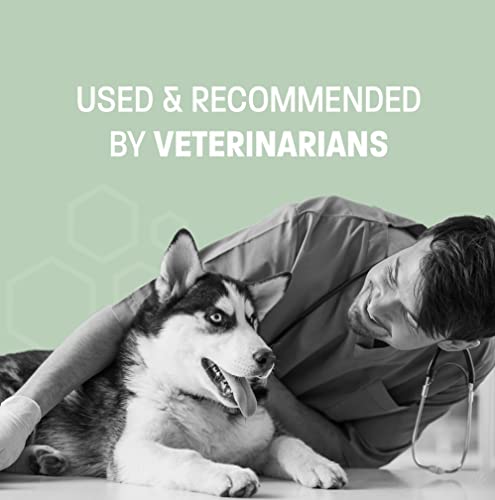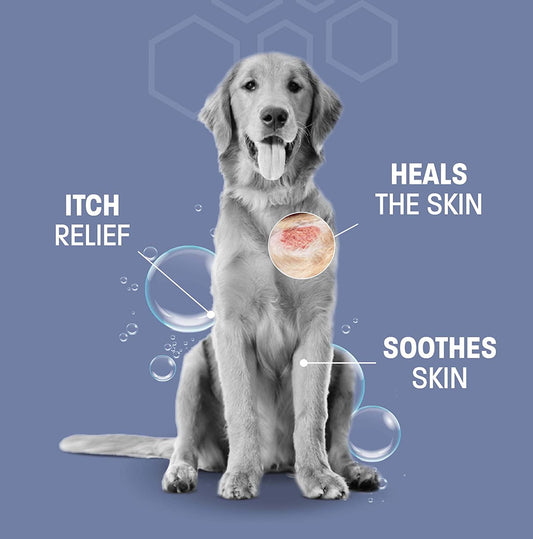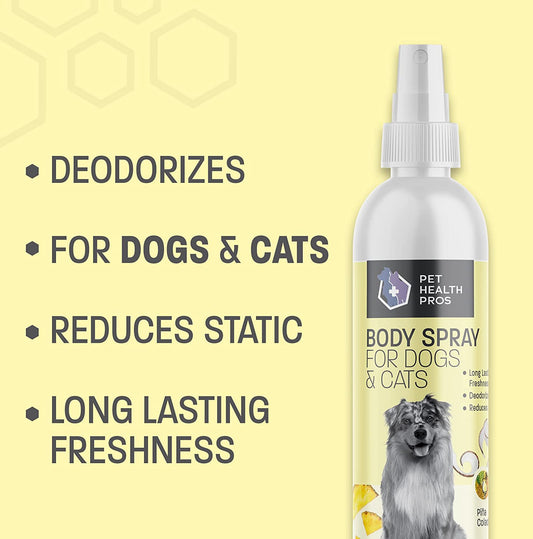Dog Ear Drops: A Comprehensive Guide
Dog ear health is an important aspect of canine care, and understanding how to properly care for your dog's ears is crucial for their overall well-being. From choosing the right ear drops to administering them safely and providing post-treatment care, there are many factors to consider. In this comprehensive guide, we will explore the key aspects of dog ear health and provide valuable insights into caring for your furry friend's ears.
Key Takeaways
- Regular ear checks are essential for identifying and addressing ear problems early on.
- Consulting a veterinarian is crucial for selecting the right ear drops and administering them safely.
- Proper preparation and technique are important for administering ear drops to your dog.
- Post-treatment care and preventive measures play a significant role in maintaining your dog's ear health.
- Seek professional help if your dog experiences persistent ear problems despite treatment and preventive measures.
Understanding Dog Ear Health
Anatomy of a Dog's Ear
The anatomy of a dog's ear is a complex and intricate system that plays a crucial role in your pet's overall well-being. Understanding the structure and function of the ear can help pet owners identify and address potential issues effectively. The ear is divided into three main parts: the outer ear, middle ear, and inner ear. Each part serves a specific purpose in the process of hearing and maintaining balance. The outer ear includes the ear flap (pinna) and the ear canal, which is lined with specialized skin and glands that produce cerumen (ear wax). The middle ear contains the eardrum (tympanic membrane) and a chain of small bones that transmit sound vibrations to the inner ear. The inner ear houses the cochlea, vestibule, and semicircular canals, which are responsible for converting sound waves into electrical signals and maintaining equilibrium. Understanding the intricate anatomy of the ear is essential for pet owners to recognize and address any abnormalities or discomfort their pets may experience. It is crucial to monitor your pet's ear health regularly and seek professional advice if any concerns arise.
Choosing the Right Ear Drops for Your Dog
Types of Ear Drops Available
When selecting the right ear drops for your dog, it's essential to consider their specific ear care needs and any existing ear health issues. Our assortment of otic solutions is meticulously crafted to address a wide range of ear irritations and hygiene requirements. Whether your pet requires routine maintenance or more advanced care, our products are formulated with gentle yet effective ingredients to ensure a safe and thorough clean. All our ear care products are proudly made in the USA, adhering to stringent quality standards, to provide your pet with the optimal ear health and hygiene they deserve. Browse through our selection and elevate your pet's ear care routine.
Considerations for Selecting Ear Drops
When selecting ear drops for your dog, it's important to consider the specific needs of your pet. Factors such as the severity of the ear condition, any known allergies, and the preference for medicated solutions should guide your decision. Additionally, consulting a veterinarian is crucial to ensure the safety and effectiveness of the chosen ear drops. Here are some key considerations to keep in mind:
- Severity of the ear condition
- Allergies and sensitivities
- Preference for medicated solutions
It's essential to choose ear drops that are suitable for your dog's individual needs. Always seek professional advice when in doubt about the best course of action for your pet's ear health.
Consulting a Veterinarian for Recommendations
When considering the right ear drops for your dog, it's essential to consult a veterinarian for personalized recommendations. Your veterinarian is the best source of guidance when it comes to selecting the most suitable ear drops for your dog's specific needs. They can take into account your dog's medical history, any existing ear problems, and other relevant factors to provide tailored advice. Additionally, they can recommend the most effective otic solutions that align with your dog's well-being. It's important to remember that the expertise of pet health pros is invaluable in ensuring the safety and effectiveness of the ear drops you choose for your furry friend.
Administering Ear Drops Safely
Preparing Your Dog for Ear Drops
Before administering ear drops, it's important to ensure that your dog is calm and comfortable. Use gentle massaging and soothing words to relax your dog. Create a quiet and comfortable environment to minimize distractions. Once your dog is relaxed, carefully hold the ear flap and gently lift it to straighten the ear canal. This will provide better access for administering the ear drops. Avoid using cotton swabs or other objects to clean the ear canal, as this can push debris further inside and cause injury. Instead, use antibacterial wipes to gently clean the outer ear and remove any visible dirt or debris. After administering the ear drops, gently massage the base of the ear to help distribute the medication. Monitor your dog for any signs of discomfort or irritation after the treatment. If you notice any adverse reactions, seek veterinary advice immediately.
Proper Technique for Administering Ear Drops
When administering ear drops to your dog, it's important to ensure that the process is done correctly to maximize effectiveness. Start by gently restraining your dog to prevent sudden movements. Hold the ear flap and gently lift it to straighten the ear canal. With the dropper, carefully place the prescribed number of drops into the ear canal. Massage the base of the ear to help the drops disperse. Allow your dog to shake its head to remove any excess solution. Repeat the process for the other ear if necessary. Always follow the veterinarian's instructions for the ear drops administration. After administering the drops, observe your dog for any signs of discomfort or irritation. If you notice any unusual behavior, consult your veterinarian immediately. Remember, patience and gentle handling are key to a successful ear drops administration.
Caring for Your Dog's Ears After Treatment
Preventive Measures for Ear Health
Preventive measures for maintaining your dog's ear health are crucial in ensuring long-term otic well-being. Regular cleaning and inspection of your dog's ears can help prevent ear infections and ear mites. Additionally, implementing joint health strategies can contribute to overall ear health. Consider incorporating supplements that support joint health, as this can have a positive impact on your dog's ear health. Furthermore, a balanced diet and regular exercise can also play a role in maintaining healthy ears. Remember, a proactive approach to preventive measures can significantly reduce the risk of ear-related issues in your furry friend.
When to Seek Professional Help
If you notice any signs of yeast infection in dogs, such as foul odor, redness, or discharge, it's crucial to seek professional help from a veterinarian. Timely intervention can prevent the condition from worsening and causing discomfort to your dog. Additionally, a veterinarian can provide accurate diagnosis and recommend appropriate treatment to address the yeast infection effectively. Remember, early detection and treatment are key to ensuring your dog's ear health.
Caring for your dog's ears after treatment is crucial for their overall health and well-being. At Pet Health Pros, we understand the importance of providing top-grade pet health supplies at affordable prices. Our products are made in the USA and are backed by a 100% satisfaction guarantee, so you can shop with confidence. Visit our website to explore our range of pet health supplies and give your furry friend the care they deserve.
Conclusion
In conclusion, it is essential to prioritize the health of your dog's ears to ensure their overall well-being. By understanding the anatomy of a dog's ear, recognizing common problems, and conducting regular checks, you can proactively address any issues that may arise. When it comes to choosing the right ear drops, considering the available types, important considerations, and seeking recommendations from a veterinarian are crucial steps. Administering ear drops safely requires proper preparation, technique, and patience in dealing with any resistance or discomfort. After treatment, ongoing care and monitoring, along with preventive measures, play a significant role in maintaining ear health. Knowing when to seek professional help is also vital. With these insights, you can confidently care for your dog's ears and ensure their well-being. Educating yourself about ear health and taking proactive measures can make a significant difference in your dog's quality of life.
Frequently Asked Questions
What are the common signs of ear problems in dogs?
Common signs of ear problems in dogs include shaking of the head, scratching at the ears, redness or swelling, odor from the ears, and discharge.
How often should I check my dog's ears for signs of infection?
It is recommended to check your dog's ears at least once a week for signs of infection or irritation.
Can I use human ear drops on my dog?
No, it is not recommended to use human ear drops on dogs as they may contain ingredients that are harmful to dogs or may not be effective for treating canine ear issues.
What should I do if my dog resists having ear drops administered?
If your dog resists having ear drops administered, it's important to stay calm and gentle. You can try distracting your dog with treats or toys and gradually introduce the ear drops in a positive and reassuring manner.
How long does it take for ear drops to start working on my dog?
The effectiveness of ear drops can vary depending on the specific condition being treated. It's important to follow the recommended treatment duration provided by your veterinarian.
When should I seek professional help for my dog's ear issues?
You should seek professional help if your dog's ear issues persist, worsen, or if you notice any unusual symptoms such as bleeding, severe pain, or hearing loss.









